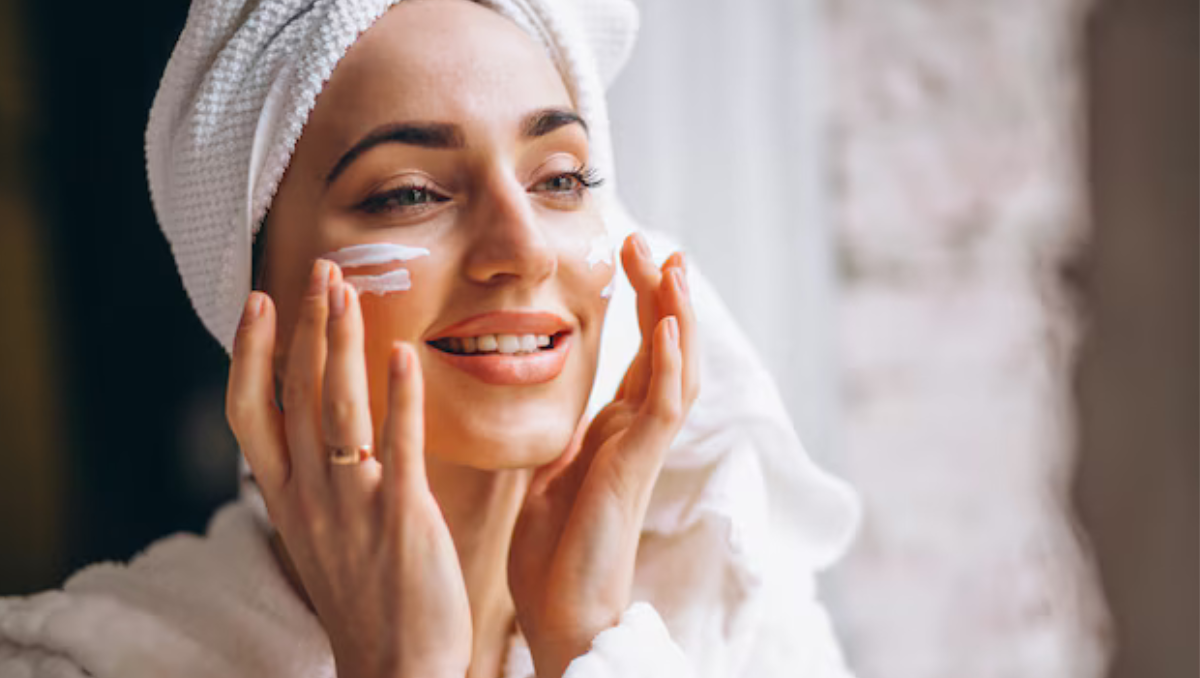The skincare market is flooded with products featuring ingredients such as salicylic acid, lactic acid, glycolic acid, and others. While these acids may initially seem intimidating, they simply belong to a category of chemical exfoliants for the skin known as AHAs (Alpha Hydroxy Acids) and BHAs (Beta Hydroxy Acids). These ingredients can help achieve smooth and glowing skin and are also effective in addressing various concerns including acne, hyperpigmentation, scars, and signs of aging. But which of these acids are right for you and how can you incorporate them in your skincare routine correctly?
Table of Contents
What are AHAs and BHAs
AHAs (Alpha Hydroxy Acids) and BHAs (Beta Hydroxy Acids) are types of chemical exfoliants that remove the accumulated dead skin cells from the uppermost layer of the skin. They can be found in an array of skincare products like cleansers, moisturizers, toners, scrubs and peels that can be formulated for both your face and body. Their usage also depends on the concentration of the acid in your product.
What are the differences?
The difference between the two is that AHAs are water-soluble and help exfoliate the surface of the skin, promoting the growth of new and even-toned skin cells. On the other hand, BHAs are oil-soluble and work by penetrating deeper into the pores to exfoliate dead skin cells and remove excess sebum. Both can help improve skin appearance and texture and sometimes AHAs and BHAs are used together in some products. However, different types of acids have uses that can target your specific concerns and skin type.

Types and Uses in Skincare
AHAs
The maximum recommended concentration for AHAs is between 10 and 15 percent. However, it may be useful to start with a lower concentration to avoid a reaction.
Glycolic Acid
Glycolic acid is one of the most commonly used AHAs that helps speed up skin turnover, promotes collagen growth and hydrates. It can be used to treat dark patches, spots, sun damage (hyperpigmentation), fine lines caused by aging and acne. Its antimicrobial properties can also help prevent breakouts.
Lactic Acid
Lactic acid is a milder exfoliant compared to glycolic acid and can be more suitable for people with sensitive skin. It is mainly used for improving even skin tone (by treating hyperpigmentation) and reducing the appearance of enlarged pores.
Malic Acid
Malic acid is also a milder AHA that is commonly used for its skin-brightening properties. It is also a humectant which means it helps your skin hold on to moisture, making it a good option for people with dry or dehydrated skin.
Citric Acid
Citric acid, apart from its exfoliant properties, is also rich in antioxidants which help protect your skin barrier from the harsh environment. It also helps maintain the skin’s Ph levels.
BHAs
If one is new to BHAs, it is recommended to start with a concentration of 0.5 to 2 percent. Products usually contain up to 5 percent concentration and should be used depending on your concern and skin type.
Salicylic Acid
Salicylic acid is a common acne treatment that can also help reduce redness and inflammation. It can also be prescribed by your dermatologist to treat conditions like dandruff, psoriasis, seborrheic dermatitis, corns and common warts.

Recommendations
- AHAs can make your skin more sensitive to the sun, so it is recommended to wear sunscreen in the day to prevent damage.
- Before using an AHA or BHA it is advised to introduce it in your routine slowly, starting off with a few times a week and then daily (depending on the concentration).
- Avoid over exfoliation by using too many exfoliating products and protect your skin with moisturzier daily.
- If you are suffering from any skin condition or have sensitive skin, it is advised to consult your dermatologist before using an AHA or BHA.
- Before using, do a patch test to see if irritation occurs. Stop usage immediately if a reaction occurs and consult your dermatologist.




3 Comments
Pingback: Harleen Sethi remembers how having severe facial acne damaged her self-esteem and that she didn't know how to manage it until PCOD was identified.
Pingback: PCOD-DESTROYS-SELF-WORTH-HARLEEN SETHI
Pingback: 5 Skincare Secrets in Monsoon for Radiant and Glowing skin